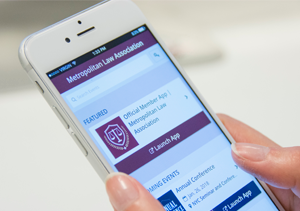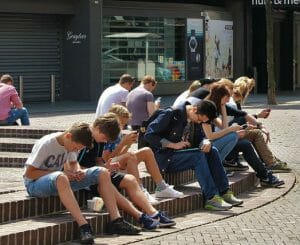6 Surefire Strategies for Engaging Younger Conference & Event Participants
For over a decade, engaging younger participants in association memberships and conferences has been a concern. For example:
“According to the U.S. Chamber of Commerce Foundation Millennial Research Review, 45 percent of associations were seeing flat or declining membership. Unless that changes, the industry could be facing a troubling future.”
This trend can no longer be ignored as employees born between 1977 and 1995 now represent the largest demographic in the workforce. It is now essential to adjust both event marketing and programming to address the needs of shifting demographics and for engaging younger participants in your content and events.
The need to attract and retain emerging professionals and young executives to events should never be an excuse to stereotype participants. There will always be individual differences in all generations. Instead, it’s important to collect information regarding the preferences of your specific target market and event participants. In other words, don’t design event marketing or programming based on assumptions. Surveys and participant profiles incorporated into the registration process can be extremely helpful.
Keeping this caution in mind, one cannot ignore the fact that in-depth research into demographic trends can help event professionals identify trends and some approaches that are likely to resonate with their target demographics. There are some important takeaways from this data to identify strategies to consider before, during, and after events and conferences to make event marketing and content more engaging to younger generations.
1. Leverage smartphones and other technology for engaging younger participants
Demographic profiles based on a number of studies have indicated that:
92% of adults from 18-29 have Smartphones (Pew Research)
- 98% of adults from 18 – 24 have Smartphones (Nielsen)
- 88% of 18 – 29 years olds use Facebook (Pew Research)
- 62% of 18 – 34 year olds take action after viewing YouTube ads (comScore for Google)
- 37% of 18 – 34 year olds “binge watch” YouTube videos daily (comScore for Google)
- 59% of 18 – 29 years olds use Instagram (Pew Research)
- 18 – 34 year olds are the heaviest users of mobile apps (comScore for Google)
Implications: Mobile App Usage is on the Rise
Instead of letting smartphones become a distraction, they should be leveraged for event marketing and content delivery. Invest in Facebook, Youtube, and Instagram marketing.
Pre-Event:
- Facebook, YouTube, and Instagram are much more likely to be fruitful for attracting participants from younger demographics than LinkedIn or Twitter
- Share videos, promote discussions with speakers, and post photos on these channels
- On registration forms, ask participants to identify the social media channels they use most frequently. Use these networks to promote the conference, event and profile speakers
- A few questions on registration forms to give participants an opportunity to identify preferred music, artists and TV shows will yield very useful data for customizing programming and marketing
Registration and Logistics:
- Incorporate technology into the registration process
- Facilitate technology assisted check-ins
- Deliver schedules, handouts, and workshop summaries online and via apps, rather than paper
Content Delivery:
- Ensure that there is enough bandwidth to support the needs of participants
- Provide ample table space for mobile devices
2. Tailor conferences, meetings, and events for diverse, multicultural audiences
Based on its analysis of U.S. Census data, The Brookings Institute highlighted racial and ethnic diversity as one of the key characteristics of the 18 – 34 demographic.
“More important for the future is the clear disparity between the racial makeup of the millennial generation and of preceding generations. Millennials were born during a period of heightened immigration.”
Source: Diversity Defines the Millennial Generation
Yet, one would never know it by looking at the keynote speakers, entertainers, and composition of most conference and event panels.
Implications: Shifting Multicultural Demographics
- Ensure that you draw conference committee members, meeting planners, event planners, speakers, facilitators, and entertainers from a more diverse pool
- Remember that the shift to more multi-cultural audiences will have an impact on preferences for everything from entertainment to cuisine
3. Customize Content
- Deliver content in shorter sound bites
- Remember, shorter attention spans do not translate into a parade of wall to wall talking heads. So, make sessions interactive with live polls, Q&A, and more!
- Expand the opportunities for networking
- Include targeted career advice breakout sessions
- Host student conferences and workshops both on and off-campus
- Offer scholarships to conferences and trade shows
The IMEX Future Leaders Forum is an excellent example of how to deliver targeted content:
4. Make Gaming A “Go-to” Strategy for Engagement
According to the 2016 Entertainment Software Association’s Sales, Demographic And Usage Data Report:
- 29% of 18 – 34 year olds are gamers
- 41% of gamers are female
- PCs are the most popular platform for gaming (56% of users)
- 36% of gamers use smartphones for gaming
Implications: Gaming
- Make sessions interactive and search for opportunities to deliver content through games, contests, and game show formats
5. Embrace Shifts in Generational Entertainment Preferences
It should come as no surprise that entertainment preferences shift with the generations. It is extremely important for meeting and conference organizers to keep abreast of entertainment trends and embrace them to keep programming, themes, and entertainment fresh and engaging.
Music: Based on its analysis of 20 billion tracks, Spotify revealed that hip-hop is the most popular musical genre globally. Royal Society Open Science Journal’s study of Billboard Hot 100 Charts since 1960 highlighted the fact that hip-hop, rap, and related styles are the most important musical genres of all times. Yet, many conference and event planners exclude it from their programming as it does not appeal to their personal tastes. Pushing your own hot buttons instead of appealing to participant preferences is a surefire strategy for declining enrollment.
Implications: Music
- Use music in event marketing, for presentations, during breaks, and for entertainment
- During presentations, use upbeat video clips with great backing tracks
- Mix it up: Instead of relying on standard fare, incorporate rap, hip-hop, and electronic music into the musical mix
- Add dance crews, hip-hop, and rap, and rap artists to the entertainment line-up
Television: Based on Nielsen studies, the most popular TV programming with 18 – 34 year olds includes:
- Sunday Night Football
- Empire
- The Big Bang Theory
- The Voice
- Big Brother
It is extremely important to note that the #1 ranking was for Sunday Night Football and 5 of the top 10 most viewed programmes for the 18 – 34 demographic are football related. Yet, few conference and event organizers incorporate football themes into their programming, speaker line-ups, or entertainment.
Implications: TV Trends
- Make it participative: Model entertainment after popular TV programmes like The Voice, So You Think You Can Dance, and World of Dance
- (Obtain the required licenses if you want to use the names of these TV programmes)
- Add professional football players to your speaker line-up
- Replace a dinner event with an opportunity to attend a football game
6. Monitor trends and cater to food and beverage preferences
Flavour and the Menu’s Generational Flavours Report highlighted the fact that food and beverage preferences vary significantly with the generations. Based on their studies, local, fresh, and unprocessed menu options are most likely to be appealing to younger participants. The report also suggest experimenting with cajun spices, saffron, miso, and wasabi.
According to Technomic Inc.’s Generational Consumer Trends Report, in addition to pizza and burgers, the most appealing dishes for younger demographics include Chinese food, Mexican dishes, BBQ, and chicken dishes. How Millennials Will Shape Food in 2017, published by Forbes, stressed the importance of delivering a multi-sensory experience. The article also highlighted the importance of high quality food photography to build excitement and the importance of ethnic cuisine and customizable menu options when catering to the 19 – 34 demographic.
Implications: Menu Planning
- Experiment with multi-cultural dishes including Asian, Latin American, Middle Eastern, and Caribbean menu selections
- Present menu highlights in your marketing. Photos, videos, and sample menus can give participants a taste of what is to come
7. Never Neglect Post-Event Engagement
- During the course of the event be sure to get video feedback from event participants, including younger attendees, to use for future promotion
- This footage can be posted on YouTube and incorporated into blogs and websites
- Use a year-round mobile app to keep the conversation going after your conference and generate a buzz for the next event


 92% of adults from 18-29 have Smartphones (Pew Research)
92% of adults from 18-29 have Smartphones (Pew Research)